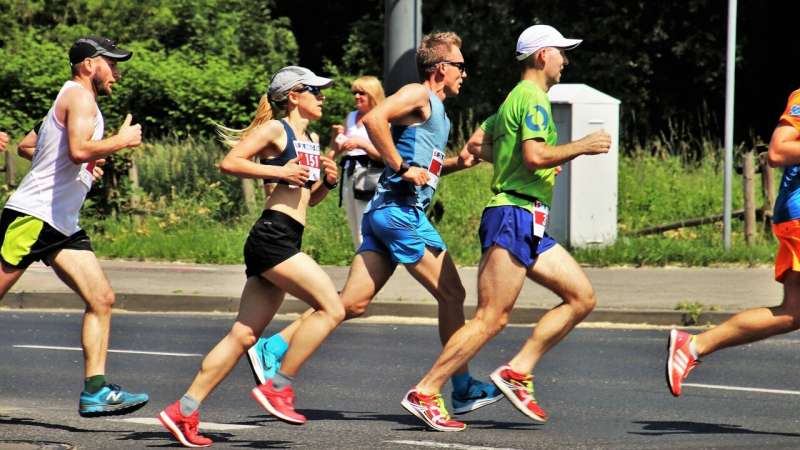This article has been reviewed according to Science X's editorial process and policies. Editors have highlighted the following attributes while ensuring the content's credibility:
fact-checked
trusted source
proofread
Too many athletes develop reproductive problems, says researcher

Many athletes compete at the peril of their reproductive health. "This applies to both men and women. Competitive training can affect sex hormones and the ability to have children," says Professor Anthony Hackney.
His research focuses on the influence of lifestyle choices and stress exposure, such as physical exercise, on reproductive health. The ultimate question is how to safeguard both athletic performance and health. "So far I have been studying this on adults, but I'm looking forward to combining our data with data from the Physical Activity and Nutrition in Children study in Kuopio."
Anthony Hackney is a professor of exercise physiology and nutrition at the University of North Carolina at Chapel Hill, U.S. He presently holds a position as Fulbright-Saastamoinen Foundation Distinguished Chair in Health Sciences at the University of Eastern Finland. The grant enables him to spend time at UEF Kuopio campus over the period of two years to enhance research collaboration, and he made his first six-week visit in the autumn of 2023, hosted by Professor Timo Lakka at the Institute of Biomedicine.
Led by Lakka, the Physical Activity and Nutrition in Children (PANIC) study is an ongoing controlled physical activity and dietary intervention study in a large population sample of children followed retrospectively since pregnancy and prospectively until adolescence. "Some of the things they have looked at are the associations between lifestyle, obesity and the risk of chronic diseases. I'm interested in seeing if lifestyle choices of the very young also affect their reproductive systems," Hackney says.
Many athletes don't eat enough
"Exercise has many health benefits, but too much exercise, which usually means training at a high competitive level, can harm reproductive health. While the athletes are very fit and good at their sport, the stress of all the exercise causes reproductive hormonal dysfunction," Hackney says.
Food choices can help to some extent—or make things worse. "An athlete should pay constant attention on getting enough energy from the right kinds of foods, but this is not always understood. Not all athletes can afford some of the better quality foods, either."
Indeed, the importance of preventing relative energy deficiency in athletes was highlighted in a recent consensus statement by the International Olympic Committee. As a member of the IOC's medical commission, Hackney was one of the experts behind the statement.
Among American athletes, some evidence suggests 15% to 20% of women and 5% to 10% of men face reproductive problems. The prevalence is highest in weight-restricted sports and those requiring large volumes of exercise, such as running hundreds of kilometers weekly to train for a marathon.
Hackney points out that for women athletes, paused periods are the first sign that they could be developing health problems. "It is not always taken seriously, as life may seem easier when not menstruating. But this not only affects your ability to conceive, but also your bone health, increasing the risk of injuries."
Men don't get such clear warning signs when their reproductive health is affected. "One indicator is losing interest in sex, but a lot of things can make that happen, so you would need a testosterone blood test or sperm analysis to know for sure."
The ultimate question is how to safeguard both athletic performance and health.
From childhood to having children
Hackney has worked with athletes for more than 30 years, but says many questions still remain unanswered. "For example, what we still don't know well is how long reproductive problems can persist after retiring from competitive sports. This is especially important for women athletes planning to have children later."
As to data from the PANIC study, he hopes that it can give more insight how to safely support competitive sports from childhood. "That might be in the context of how physically active children should be or in the context of nutrition. I would like to make certain that we are not starting children too early into something that may cause problems for them later in life."
During his first visit to Kuopio, Hackney was especially impressed by the level of collaboration across academic departments and disciplines within the PANIC study. "Although mostly absorbed with the PANIC study, I had the time to learn about other interesting projects as well, such as the DR's EXTRA study involving an exercise intervention for older adults."
"One of the things I hope to do over this two-year period is to build stronger ties between our universities, and not just in my own field of research. I have had Fulbright positions in Lithuania and Poland before, and I have found it really rewarding to see researchers and students connecting across universities."
A competitive runner in his youth, nowadays Hackney walks a lot. "In Kuopio, my wife and I were walking 10 to 15 kilometers per day, in addition to going swimming and working out at a local pool. We really love Kuopio, it's a nice sized city where we can find everything we need. Next time, even the weather will be more enjoyable, because I plan to return during the summer."



















